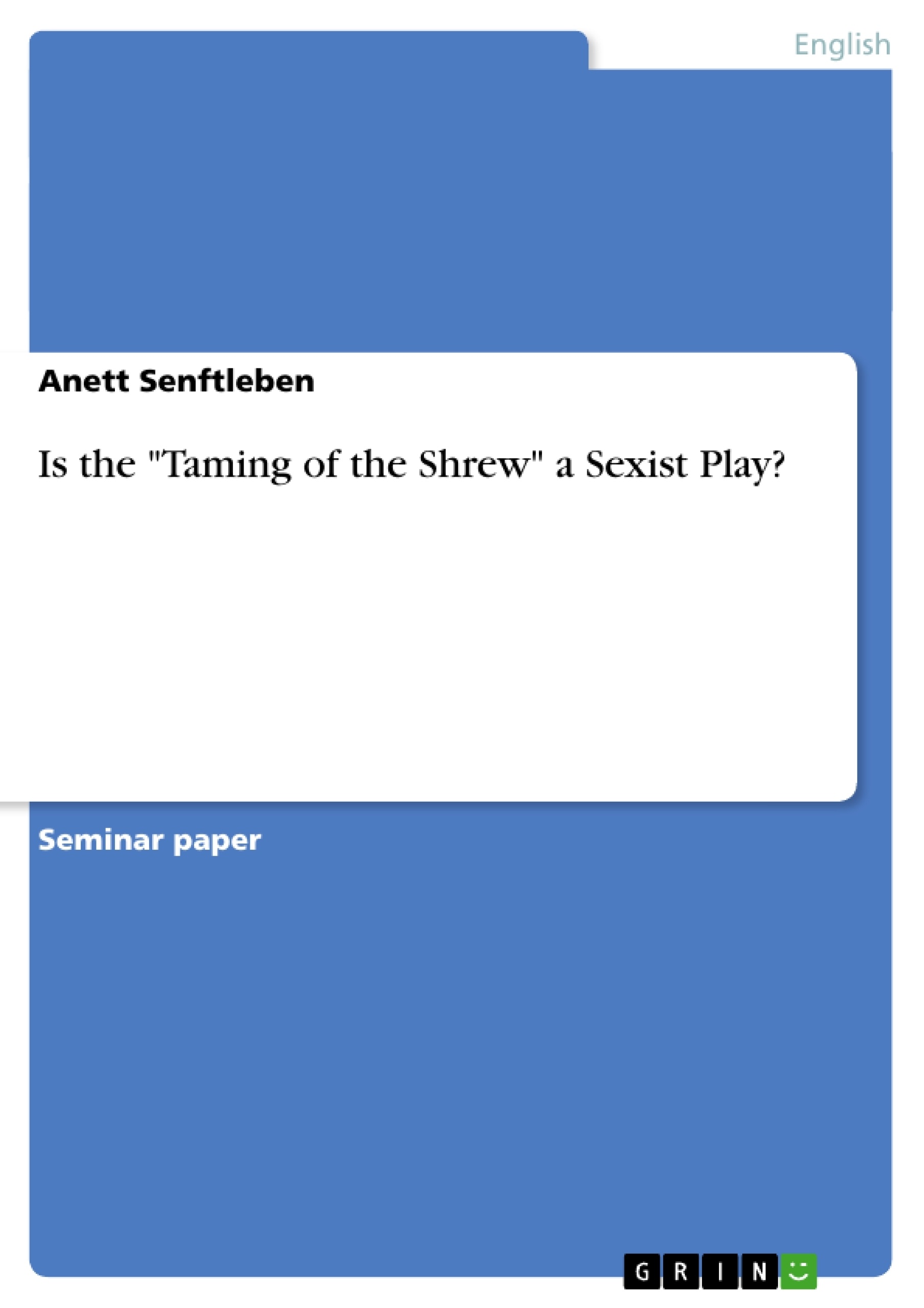From its title one would think that “The Taming of the Shrew” is about women’s lack of rights, duties , and their inferior social status in the 16th century.1 That is one reason why it is considered to be a controversial play, but there are two sides of the story. Many of Shakespeare’s admirers have been embarrassed about his chauvinistic point of view of how to tame a wife. In fact, it is unlikely that anyone today in our feminist era would write such a play unless they did so tongue in cheek.2 A play like “The Taming of the Shrew” would certainly get protestors out on the street marching; holding banners aloft. “The Taming of the Shrew” seems to offend audiences today and engenders much debate.3 On the other hand “The Taming of the Shrew” should be seen as a comedy before we think about an interpretation. Comedies were written to cheer up the audience, make them laugh and it may have been Shakespeare’s intention to give an ironic point of view about masculine ideas of a female role model in a predominantly male world. It is the Shakespearean society that is offending us, not Shakespeare himself.4 1 The Arden of Shakespeare - Brian Morris (Editor) (2002); The Taming of the Shrew, London: Methuen, p.111. 2 Nick Curtis, “Problem Play” Royal Shakespeare Company, The Taming of the Shrew (programm), (2003), p. 8. 3 Michael Billington, “Problem Play” Royal Shakespeare Company, The Taming of the Shrew (programm), (2003),p. 9. 4 Anne Thompson, “Problem Play” RSC, The Taming of the Shrew (programm), (2003), p. 9.
Inhaltsverzeichnis (Table of Contents)
- INTRODUCTION
- ELIZABETHAN SOCIETY
- MARRIAGE
- THE FEMALE IDEALISTIC ROLE MODEL VS. KATHERINA AND BIANCA
- ELIZABETHAN THEATRE AND AFTERWARDS
- “THE TAMING OF THE SHREW” - A SEXIST PLAY?
- THE TAMING PLOT - VICIOUS OR FUNNY?
- SUMMARY
- REFERENCES
Zielsetzung und Themenschwerpunkte (Objectives and Key Themes)
This paper aims to analyze the gender relations depicted in Shakespeare's "The Taming of the Shrew," specifically exploring whether it can be interpreted as a sexist play. It examines the play within the context of Elizabethan society, focusing on marriage and the idealized female role model. The paper also explores the use of comedy in the play and how it might influence audience perception.
- Gender Relations in "The Taming of the Shrew"
- The Idealized Female Role Model in Elizabethan Society
- Marriage and its Social and Cultural Significance
- The Use of Comedy in the Play
- The Interpretation of the Taming Plot
Zusammenfassung der Kapitel (Chapter Summaries)
The introduction examines the controversy surrounding "The Taming of the Shrew," arguing that it should be considered a comedy before any interpretation of its social and cultural significance. The second chapter delves into the Elizabethan social context, particularly the hierarchical structure of marriage, and examines how these societal norms are reflected in the play. The third chapter explores the ideal female role model within Elizabethan society and how it contrasts with the characters of Katherina and Bianca. The fourth chapter discusses Elizabethan theater and its context, while the fifth chapter delves into the specific question of whether "The Taming of the Shrew" can be considered a sexist play, analyzing the taming plot and its comedic elements. The paper concludes with a summary of its main points.
Schlüsselwörter (Keywords)
Key themes and concepts explored in this paper include Elizabethan society, gender relations, marriage, female role models, comedy, "The Taming of the Shrew," and sexism. The paper examines the play within its historical context, analyzing the portrayal of women and the societal norms of the Elizabethan era.
- Quote paper
- Anett Senftleben (Author), 2004, Is the "Taming of the Shrew" a Sexist Play?, Munich, GRIN Verlag, https://www.grin.com/document/37151



